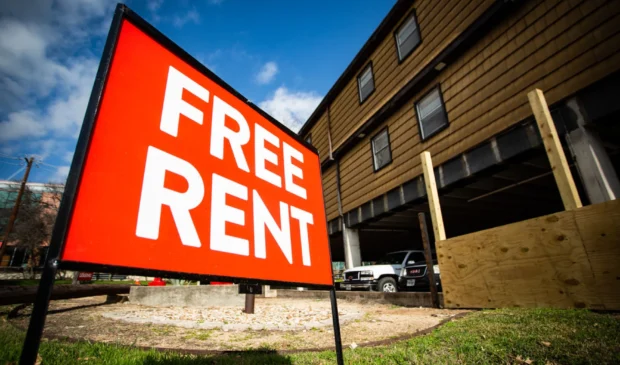Photo by Gabriel C. Pérez/ KUT News
As rents across the country go up, Austin prices continue to fall
Wednesday, September 11, 2024 by
Audrey McGlinchy, KUT During the pandemic, Austin came to exemplify the story of housing across the country: Prices went through the roof. In 2021, the average monthly rent in the region rose 25 percent. Similar increases happened in cities in California and Arizona.
But that narrative has flipped. As tens of thousands of new apartments have opened in Austin and the rate of people moving to the city has slowed, rent prices have been falling. For more than a year.
According to new numbers from Zillow, Austin is now leading the country in declining rents. But this time few other large U.S. cities are following.
The typical monthly rent in the Austin metro is down nearly 4 percent compared to last summer. Rents in similarly priced cities – including Dallas, Phoenix and Atlanta – are rising. The average monthly rent in Austin is now anywhere between roughly $1,500 and $1,800.
In the early years of the pandemic, demand for apartments rose. Tens of thousands of people moved to the city because they could suddenly work remotely. Meanwhile, some residents already living here decided to leave shared living situations and find apartments on their own.
In response to the demand for housing, rent prices rose at an incredible pace. To builders, this indicated a need and a business opportunity: more homes.
“A lot of builders … they look at the demographics and they look at the job growth and they look at projections and they say, ‘You know what, this is going to be a good place for me to build,’” Kim Betancourt, vice president of multifamily research at mortgage-backer Fannie Mae, said. “This is what happened with Austin.”
In 2021, local governments in the Austin area issued permits to build nearly 51,000 homes, according to census data. While not every developer that receives a permit eventually builds, this represents a rate of permitting much higher than in other cities at the time.
Because construction takes several years, apartments permitted years ago are now opening. At the same time, the population surge that defined Austin in 2020 and 2021 has slowed.
More homes, fewer new people. Thus, rent prices began to fall last summer.
“It’s that building bonanza that helped to bring costs back down to earth,” Orphe Divounguy, a senior economist at Zillow, said.
Divounguy stressed that “back down to earth” does not necessarily mean more affordable. In 2022, nearly half of all renters in the Austin area lived in housing they could not afford, according to Harvard University’s Joint Center for Housing Studies.
Economists predict that Austin’s falling rents won’t last beyond next year. Because of construction costs, developers are building less than they were just two years ago.
“It’s not gonna last long,” Betancourt said.
This story was produced as part of the Austin Monitor’s reporting partnership with KUT.
The Austin Monitor’s work is made possible by donations from the community. Though our reporting covers donors from time to time, we are careful to keep business and editorial efforts separate while maintaining transparency. A complete list of donors is available here, and our code of ethics is explained here.
You're a community leader
And we’re honored you look to us for serious, in-depth news. You know a strong community needs local and dedicated watchdog reporting. We’re here for you and that won’t change. Now will you take the powerful next step and support our nonprofit news organization?








